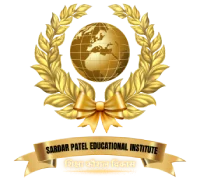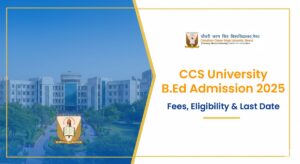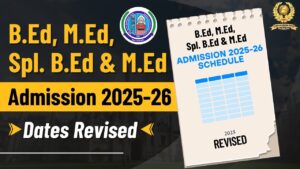If you’re planning a career in teaching, it’s essential to understand the qualifications and roles associated with different teaching levels. One of the most frequently asked questions by aspiring educators is: “What is the difference between PRT, TGT, and PGT?” These are designations used in the Indian education system to classify teachers based on the level they are eligible to teach and their qualifications.
In this article, we’ll explain the full form of PRT, TGT, and PGT, their qualifications, job responsibilities, eligibility criteria, and how they differ from each other.
📚Also Know: How to Become a Teacher in India in 2025: Your Complete Guide
Full Forms and Teaching Levels
| Designation | Full Form | Classes Taught |
|---|---|---|
| PRT | Primary Teacher | Classes 1 to 5 |
| TGT | Trained Graduate Teacher | Classes 6 to 10 |
| PGT | Post Graduate Teacher | Classes 11 and 12 |
PRT, TGT, and PGT represent teaching positions at primary, secondary, and senior secondary levels, respectively.
📚Also Know: Top 10 Universities For B.Ed. Admission Without an Entrance Exam
Eligibility and Educational Qualifications
| Criteria | PRT | TGT | PGT |
|---|---|---|---|
| Minimum Qualification | 10+2 + D.El.Ed/B.El.Ed | Graduation + B.Ed + CTET Paper II | Post Graduation + B.Ed |
| Entrance Exam | D.El.Ed Entrance Exam | B.Ed Entrance Exam | B.Ed Entrance Exam |
| CTET Requirement | Paper I | Paper II | PGT-specific exams |
- PRT: Requires a Diploma in Elementary Education (D.El.Ed) or Bachelor of Elementary Education (B.El.Ed), along with passing CTET Paper I. This prepares teachers to handle foundational subjects for young learners.
- TGT: Requires a graduation degree in a relevant subject and a Bachelor of Education (B.Ed), plus CTET Paper II. TGTs teach specialized subjects to students in middle and secondary school.
- PGT: Requires a postgraduate degree in the subject to be taught, along with a B.Ed. PGTs are responsible for advanced and specialized teaching at the senior secondary level.
Roles and Responsibilities
- PRT (Primary Teacher):
- Teaches all general subjects to classes 1 to 5.
- Focuses on basic literacy, numeracy, and foundational skills.
- Prepares lesson plans, assesses student performance, and fosters a nurturing environment.
- TGT (Trained Graduate Teacher):
- Teaches specific subjects like Mathematics, Science, Social Studies, and Languages to classes 6 to 10.
- Provides a deeper understanding of subjects and prepares students for higher education.
- Develops lesson plans, conducts assessments, and may supervise extracurricular activities.
- PGT (Post Graduate Teacher):
- Teaches specialized subjects to classes 11 and 12.
- Prepares students for board exams and competitive entrance tests (like JEE, NEET).
- Focuses on advanced concepts and career-oriented guidance.
Key Differences Between PRT, TGT, And PGT
| Aspect | PRT | TGT | PGT |
|---|---|---|---|
| Teaching Level | Primary (1–5) | Secondary (6–10) | Senior Secondary (11–12) |
| Qualification | D.El.Ed/B.El.Ed + CTET I | Graduation + B.Ed + CTET II | Post Graduation + B.Ed |
| Subjects | All General Subjects | Specialized Subjects | Specialized Subjects |
| Focus | Basic Concepts | In-depth Subject Knowledge | Advanced Concepts |
| Salary Range (approx) | ₹30,000–₹40,000 | ₹40,000–₹50,000 | ₹50,000–₹60,000 |
Career Path and Progression
- Candidates often start as PRTs and, with further qualifications, can move up to TGT and then PGT roles.
- PGTs are considered the most senior among the three, often preparing students for higher education and professional courses.
Which is Better – PRT, TGT, or PGT?
It depends on your academic qualifications, career goals, and interest in teaching specific age groups. If you enjoy working with young children, PRT is ideal. If you have a subject specialization and a graduate degree, TGT is suitable. If you are passionate about teaching advanced-level subjects and preparing students for competitive exams, PGT is the right choice.
FAQs: What is the Difference Between PRT, TGT, And PGT
What does PRT, TGT, and PGT stand for?
PRT stands for Primary Teacher, TGT for Trained Graduate Teacher, and PGT for Post Graduate Teacher.
What is the main difference in the classes they teach?
PRTs teach classes 1–5, TGTs teach classes 6–10, and PGTs teach classes 11–12.
What qualifications are needed for each post?
PRT requires D.El.Ed/B.El.Ed, TGT requires graduation and B.Ed, and PGT requires post graduation and B.Ed.
Can a TGT become a PGT?
Yes, a TGT can become a PGT by completing a postgraduate degree in the relevant subject along with a B.Ed.
Which exams are required for these posts?
PRTs need to clear CTET Paper I, TGTs need CTET Paper II, and PGTs must clear PGT-specific exams, often conducted by government bodies like KVS, NVS, or DSSSB.
Conclusion
Understanding what is the difference between PRT, TGT, and PGT is crucial if you’re planning to become a teacher in India. Choose the right path based on your qualifications and the age group or subject you’re passionate about teaching. Each category has its own importance in shaping the future of students at different academic levels.
If you are looking to pursue D.El.Ed, B.Ed, or M.Ed and step into the teaching profession, Sardar Patel Educational Institute offers direct admission and expert guidance. Call us at +91 9773911367 or +91 9625140337 for counseling and enrollment.











